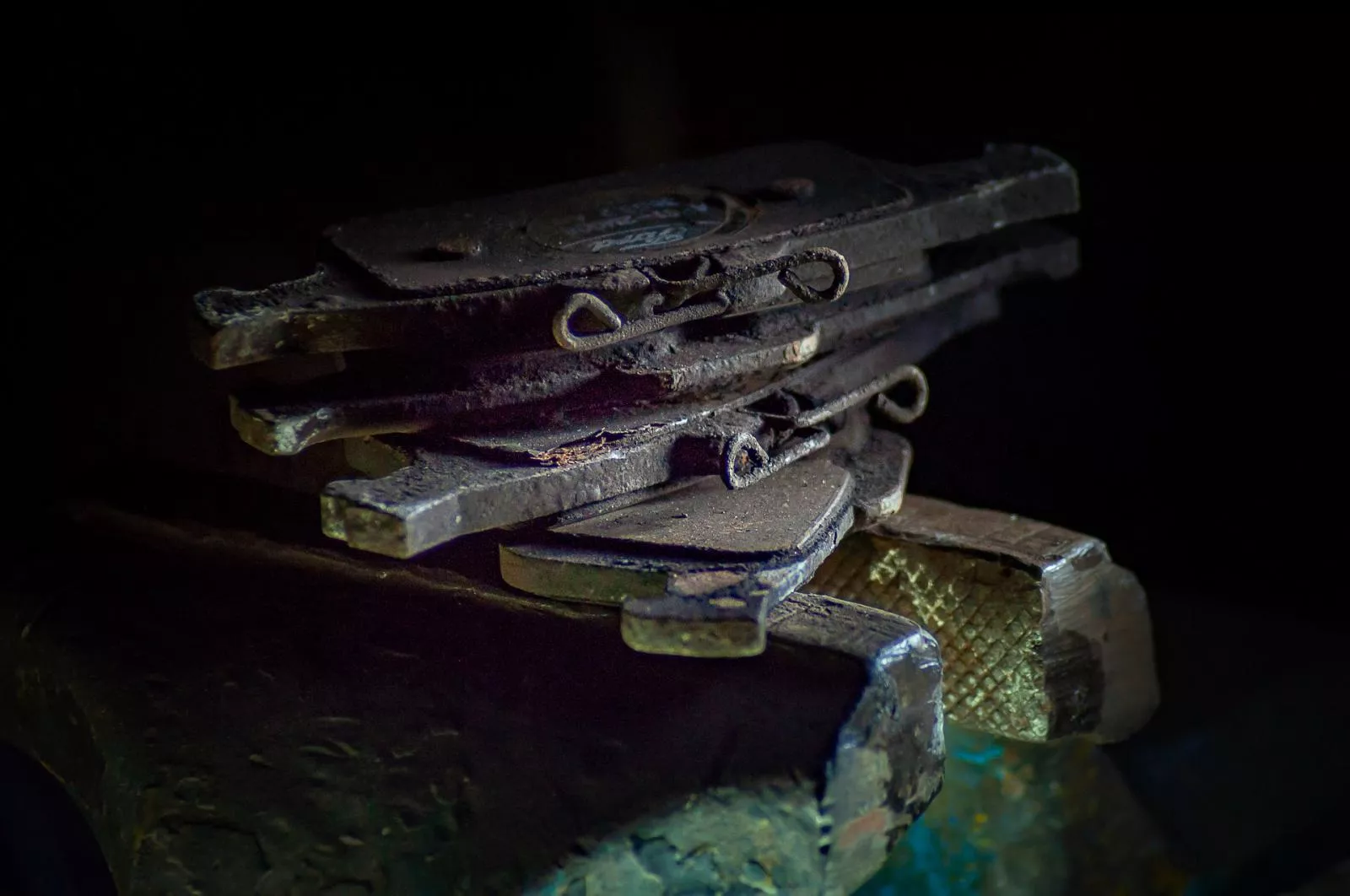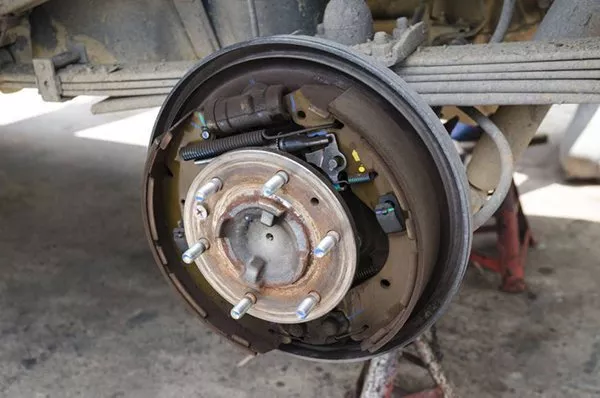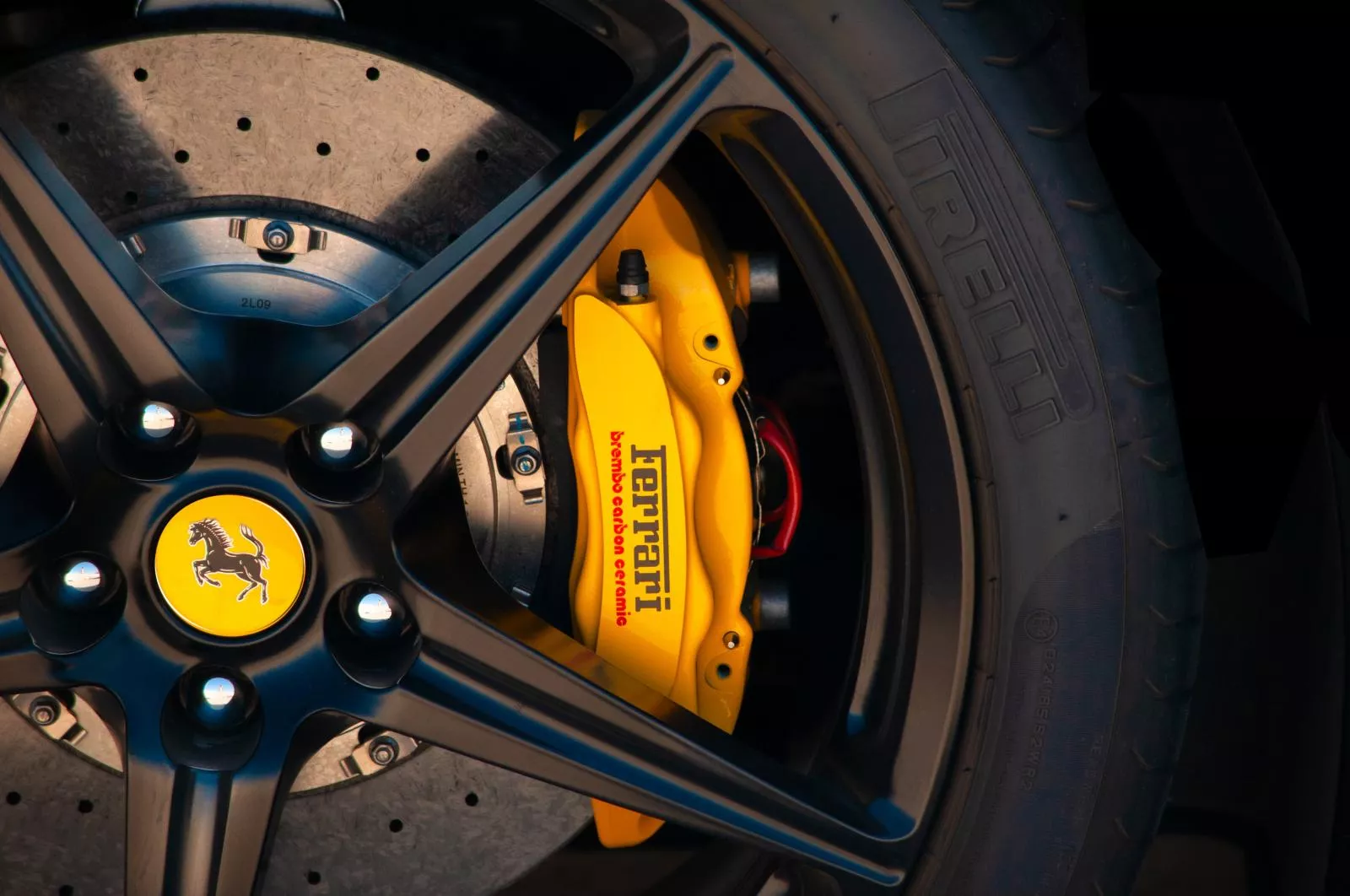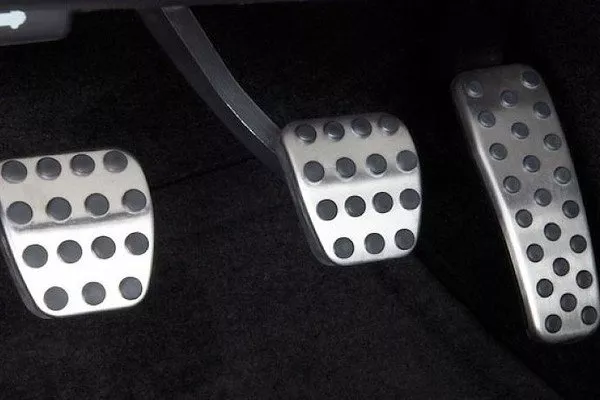The braking system is one of the most important systems installed in your car. You can’t drive in the streets without it, or at least if you have a faulty one. Part of the braking system is the brake pads, which are used to slow down or stop your car.
Brake pads convert the kinetic energy of the spinning wheels to thermal energy. This is the reason why you smell like something is burning if you happen to drive downhill with frequent heavy braking applications. With that being said, your brake pads should be able to withstand extreme heat to work properly.

Here's what a brake pad looks like
Not to confuse you with a brake caliper, a brake pad is fitted inside a brake caliper on each side. The colored part behind your wheels is the brake caliper. A brake caliper houses the brake pads which will then be used to contact the brake rotor when you step on the brake pedal.
There are various types of brake pads you can get in the automotive market. All types are designed to do one thing and that is to slow down your vehicle. However, some factors differentiate them from each other. Knowing "what brake pads are made of" will help you choose what type of brake pad should you get.
Organic brake pads
Aside from the amount of braking power a brake pad can produce, engineers also look into how it can affect the environment. As such, organic brake pads are introduced. This type of brake pad doesn’t produce much brake dust from braking that could harm one’s health.
An organic brake pad contains materials such as glass, Kevlar, fiber, and rubber. These materials are relatively inexpensive to use which makes this type of brake pad the most affordable off this list. This is ideal to be used for city driving where lands are plain and flat.
The only downside of organic brake pads is that they wear the fastest. This does not contain a high amount of metal that could extend the life of the pad.
Metallic brake pads
Moving on the next type is metallic brake pads. There are two types of metallic brake pads, namely the semi-metallic and full metallic. The most common brake pads that are used by production vehicles these days are semi-metallic.
As the name suggests, the materials used are not completely metallic. Semi-metallic brake pads come with more or less 40 percent metals such as steel and iron. This type of brake pad is the best when it comes to the city and long drives.

Drum brakes don't use the same brake pads in disc brakes
On other the hand, full metallic contains more than 90 percent metal. You would likely see full metallic brake pads in some performance vehicles as high amounts of braking powers is required to stop a fast accelerating vehicle.
The reason why metallic brake pads are commonly used is that metal can take up heat easily. They also tend to last longer than organic brake pads. Unfortunately, there are quite some downsides to choosing a metallic brake pad.

Many performance vehicles come with metallic brake pads
The first one is its noise factor. You are likely to hear a squeaky sound that’s caused by two metals rubbing against each other after years of usage. The other downside is that it is harsh on the brake rotor.
In terms of pricing, it sits between the organic and the next brake pad material type, which is ceramic. However, if you opt for more performance-oriented full metallic brake pads, then expect to pay more as compared to installing semi-metallic brake pads.
>>> Related: Everything about brake pads: Tips, Advice, Prices in the Philippines
Ceramic brake pads
Ceramic brake pads are made up of ceramic fibers and fillers which result in quieter braking. If you want to drive with utmost comfort on the road, then a ceramic brake pad is the best option you can choose from this list.
Aside from excellent quiet braking applications, ceramic brake pads also don’t produce much harmful brake dust. This makes this type of brake pad an environmentally-friendly choice as well just like the organic brake pads.

The yellow part is a brake caliper, not a brake pad
Another benefit of installing ceramic brake pads is that it lasts the longest. This will help you refrain from frequent brake pad replacements thanks to its longevity. Overall, ceramic brake pads are the cleanest, quietest, and last the longest.
However, all these great benefits and advantages a ceramic brake pad offer do come with a hefty price. Ceramic brake pads carry the most expensive price tag as compared to organic, semi-metallic, and full metallic brake pads.
Brake Pad Material Comparison & How to Choose the Correct one
All types of brake pads come with their advantages and disadvantages. We think that none is better than the other type. The best type of brake pad will depend on your daily driving needs whether in the city or on long drives.
If you use your car solely to go to work in a normal road condition where the road is plain and flat, you can opt for organic brake pads. You will not exceed 100 km/h on the road anyway especially in rush hours so a high amount of braking power is not necessary. This type of brake pad costs the least as compared to other types which makes it a practical option.

Be gentle on the brake pedal to extend the life of your brake pads
However, if you drive on expressways around every week for road trips or business trips, then you can go for metallic brake pads. They produce the best braking power which can be a handful especially when slowing down on highways.
Ceramic brake pads are not ideal to install in anyone’s car due to their high price tag. But if you are up for the price, then this type might be the one for you.
|
Brake Pad Type
|
Organic
|
Metallic
|
Ceramic
|
|
Price
|
Low
|
Mid
|
High
|
|
Longevity
|
Low
|
Mid
|
High
|
|
Noise
|
Low
|
High
|
Low
|
|
Eco factor
|
High
|
Low
|
High
|
|
Performance
|
Low
|
High
|
Mid
|
>>> Related: Organic vs Ceramic brake pads - Which one is the best for your car?
What are brake pads made of: FAQs
Q: What are the different types of brake pads?
There are three common brake pads used in today’s cars, namely organic, metallic, and ceramic.
Q: What brake pads last the longest?
Ceramic brake pads last the longest. However, it also comes with a hefty price tag.
Q: What is carbon fiber brake pads?
Carbon fiber brake pads are used by high-performance vehicles as they dissipate heat well and don’t contain metal that can wear the rotor fast.
Q: Can I use metallic brake pads on the track?
Yes, metallic brake pads are commonly used by performance vehicles due to their high braking power.
Q: How long do brake pads last?
It depends on how frequently you slam on your brakes. On average, expect to replace your brake pads every 45,000 to 55,000 kilometers.
Here at Philkotse.com, we value your interest in the automotive industry. Visit our website to find out more.
Recent posts
- How to adjust drum brakes Jan 30, 2021
- Drilled and Slotted Brake Rotors Dec 31, 2020
- Things you might not know about brake pads and car rotors Jan 30, 2021
- How to change your car's brake pads properly? Aug 17, 2022
- Everything You Need To Know About Brake Fluid Aug 17, 2022












